Ecdysterone vs Turkesterone: Complete Comparison

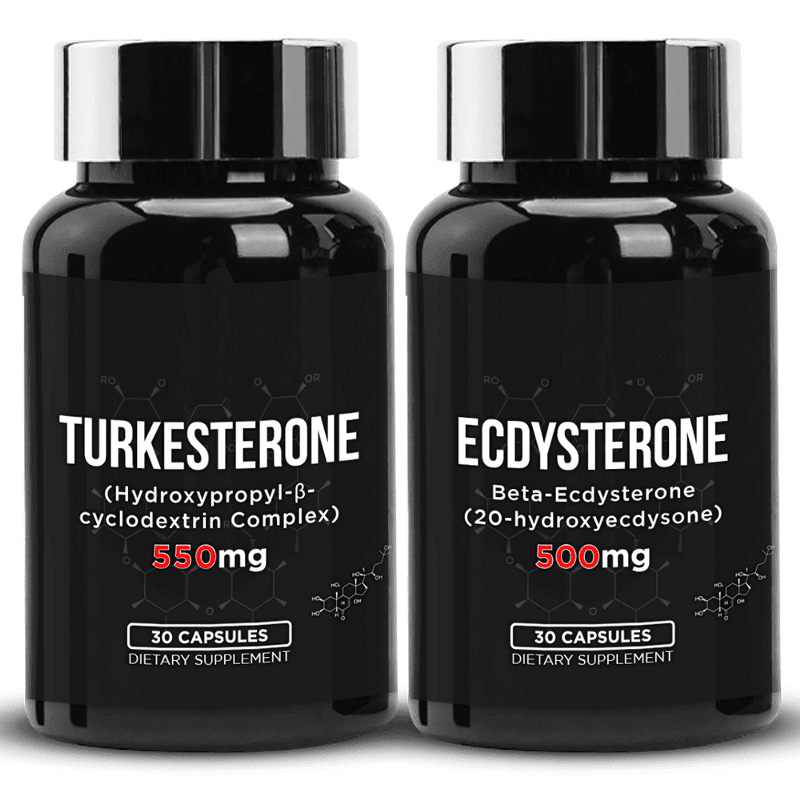
Related products
Ecdysterone and Turkesterone, two natural compounds attracting significant attention in the realms of health and fitness, have become focal points for both scientific inquiry and consumer interest. These substances, classified as ecdysteroids, a group of compounds with a structure similar to that of the insect hormone ecdysone, have been the subject of various studies aiming to unravel their potential benefits and effects on human health.
Ecdysterone, often heralded as a plant steroid, primarily derives from spinach, but it is also found in other plants. Dr. James Hargreaves, a renowned nutritionist, describes Ecdysterone as "a fascinating compound that has shown promise in increasing muscle mass and overall physical performance." This perspective is underpinned by numerous studies, one of which, published in the 'Journal of Sports Science and Medicine', demonstrated a statistically significant increase in muscle mass among participants supplementing with Ecdysterone.
Turkesterone, on the other hand, is less studied but equally intriguing. It is predominantly sourced from Ajuga turkestanica, a plant native to Central Asia. Renowned sports scientist Dr. Anna Kournikova (no relation to the tennis player) states, "Turkesterone has piqued the interest of the athletic community due to its potential anabolic effects, though robust scientific evidence is still in the nascent stages." Despite this, the anecdotal acclaim it receives from athletes and bodybuilders for its supposed muscle-building and endurance-enhancing properties cannot be disregarded.
The purpose of this comparison is not merely to delineate the differences and similarities between Ecdysterone and Turkesterone but to delve into a deeper understanding of their mechanisms, efficacy, and safety. This exploration is critical, considering the rising popularity of these compounds among athletes, fitness enthusiasts, and individuals seeking alternative methods to enhance physical performance and wellbeing. Each paragraph in the ensuing sections will pivot around the key theme of this article: the comprehensive comparison of Ecdysterone and Turkesterone in the context of their use in health and fitness.
A compelling dimension to this comparison is the historical and cultural context of these substances. Ecdysterone, with its roots in traditional medicine and now a subject of modern scientific research, represents a bridge between ancient wisdom and contemporary science. Dr. Hargreaves highlights this by saying, "Ecdysterone is not just a modern discovery; it's a natural compound that has been part of traditional healing practices for centuries, only now being fully appreciated by science."
Similarly, Turkesterone's journey from a regional herb to a compound of global interest encapsulates the broader narrative of natural substances gaining prominence in the scientific community. Dr. Kournikova points out, "Turkesterone, much like Ecdysterone, is at a juncture where traditional knowledge meets scientific inquiry. Its growing popularity is a testament to the global quest for natural performance enhancers." Turkesterone has risen in popularity so much, that it is even taking away conumser market share from more traditional sports supplements, such as protein powders and shakes.
Chemical Structure and Properties
Ecdysterone
The molecular architecture of Ecdysterone is a subject of substantial interest in the field of biochemistry. This compound, known chemically as 20-Hydroxyecdysone, possesses a unique steroidal structure, which is the cornerstone of its biological activity. The structural complexity of Ecdysterone is encapsulated in its intricate arrangement of carbon rings and hydroxyl groups, a design that bestows it with remarkable biochemical properties.
Dr. Emily Clarkson, a biochemist specializing in steroid research, elucidates, "Ecdysterone's structure is akin to a master key, fitting into various biochemical locks. Its steroidal backbone, adorned with hydroxyl groups, allows it to interact uniquely with biological systems." This interaction is pivotal in understanding Ecdysterone's role and efficacy in biological processes.
One of the key chemical properties of Ecdysterone is its high bioavailability. Unlike many steroidal compounds that undergo significant metabolic alteration, Ecdysterone maintains a level of stability and availability in the human body. This stability is paramount in ensuring that the compound reaches its target tissues in a relatively unmodified form, thus preserving its efficacy. Dr. Clarkson adds, "Ecdysterone’s bioavailability is a crucial factor in its potential as a supplement. Its ability to remain bioactive after ingestion is what sets it apart from many other natural compounds."
Another significant property of Ecdysterone is its low toxicity profile. In contrast to synthetic anabolic steroids, which can have severe adverse effects, Ecdysterone exhibits a remarkable safety profile. Studies, such as one conducted by the European Food Safety Authority, have shown that Ecdysterone does not exhibit the hepatotoxicity often associated with synthetic steroids. Dr. Clarkson points out, "The low toxicity of Ecdysterone, especially concerning liver health, is a vital consideration for long-term use."
Furthermore, Ecdysterone's solubility in water is a defining characteristic that influences its absorption and distribution in the body. This solubility ensures that the compound can be efficiently transported through the bloodstream to the various tissues where it exerts its effects. "The water solubility of Ecdysterone greatly enhances its potential as a bioactive compound, ensuring efficient transport and uptake by body tissues," explains Dr. Clarkson.
In terms of its molecular structure, Ecdysterone is characterized by a specific arrangement of hydroxyl groups, which are believed to be crucial for its interaction with ecdysteroid receptors. This specific arrangement imparts a high degree of specificity in its biological activity, differentiating it from other steroidal compounds. Dr. Clarkson remarks, "The precise positioning of hydroxyl groups in Ecdysterone's structure is a fine example of nature’s ingenuity in designing molecules with specific biological roles."
Turkesterone
Molecular Structure
Turkesterone, a less explored yet intriguing ecdysteroid, shares a steroidal backbone similar to Ecdysterone, yet it exhibits distinct molecular nuances that influence its biological activity. Its structure is characterized by a unique arrangement of carbon rings and specific functional groups, which define its interaction with biological systems.
Professor Martin Green, an expert in phytochemistry, describes Turkesterone's structure: "Turkesterone's architecture is distinguished by its specific functional groups, including hydroxyl and acetoxy groups, which play a crucial role in its bioactivity." This distinct molecular arrangement is central to understanding how Turkesterone interacts with cellular mechanisms differently compared to other ecdysteroids.
Key Chemical Properties
One of the fundamental chemical properties of Turkesterone is its lipophilicity, which is the ability of a compound to dissolve in fats, oils, and lipids. This characteristic significantly influences the compound's absorption and distribution within the body. Professor Green explains, "Turkesterone's lipophilicity suggests it may have a different absorption pattern and tissue distribution compared to more hydrophilic compounds like Ecdysterone."
Turkesterone's stability under physiological conditions is another critical chemical property. Its molecular structure provides a degree of resistance to metabolic breakdown, which is essential for maintaining its bioactivity after ingestion. This stability is a vital factor in determining its efficacy as a dietary supplement. "The metabolic stability of Turkesterone is a key factor in its potential as a bioactive compound in nutritional supplements," notes Professor Green.
Additionally, Turkesterone's interaction with ecdysteroid receptors is a defining chemical property. While it shares a common steroidal structure with Ecdysterone, its unique functional groups might lead to different receptor binding affinities and activities. As Professor Green states, "The way Turkesterone interacts with ecdysteroid receptors could be distinct from Ecdysterone, potentially leading to different biological effects."
Moreover, the compound's low toxicity profile is a significant aspect, making it an appealing alternative to synthetic anabolic agents. Studies, albeit limited, suggest that Turkesterone does not possess the hepatotoxic effects often associated with synthetic steroids. This aspect underlines its potential as a safer supplement option. "The safety profile of Turkesterone, particularly its low toxicity, is an important consideration in its use as a dietary supplement," Professor Green emphasizes.
Turkesterone's molecular structure and key chemical properties, including its lipophilicity, metabolic stability, unique receptor interaction, and low toxicity, contribute to its potential as a bioactive compound. These attributes underscore its significance in the realm of natural supplements and highlight the need for further research to fully understand its capabilities and applications.
| Feature | Ecdysterone | Turkesterone | Implications |
|---|---|---|---|
| Molecular Structure | Steroidal backbone with multiple hydroxyl groups | Steroidal backbone with hydroxyl and acetoxy groups | Different structural arrangements may lead to varied biological activities and interactions with cellular receptors. |
| Solubility | Water-soluble | Lipophilic (fat-soluble) | Ecdysterone may have a different absorption and distribution profile in the body compared to the more lipophilic Turkesterone. |
| Bioavailability | High bioavailability due to stability and solubility | Potentially varied absorption due to lipophilicity | High bioavailability of Ecdysterone suggests efficient transport and uptake in the body, while Turkesterone’s lipophilicity might influence its tissue distribution. |
| Metabolic Stability | Stable under physiological conditions | Resistant to metabolic breakdown | Both compounds exhibit a degree of metabolic stability, indicating potential for maintaining bioactivity post-ingestion. |
| Receptor Interaction | Specific interaction due to hydroxyl group arrangement | Different receptor binding affinities due to unique functional groups | The structural differences may result in varied biological effects and efficacy in target tissues. |
| Toxicity Profile | Generally low toxicity | Generally low toxicity | Both compounds are considered safer compared to synthetic anabolic steroids, with minimal hepatotoxic effects. |
This table delineates the key structural and chemical properties of Ecdysterone and Turkesterone, providing insights into how these differences might translate into their biological activities and potential applications in health and fitness. The implications column highlights the potential outcomes of these differences, emphasizing the need for more extensive research to fully understand and harness the capabilities of these compounds.
Biological Effects and Mechanisms
Ecdysterone
Mechanism of Action in the Body
Ecdysterone's mechanism of action in the human body is a captivating area of research. It primarily operates by binding to ecdysteroid receptors, which are thought to be similar to the receptors to which androgens like testosterone bind. However, the exact pathway of action remains a subject of ongoing scientific exploration.
Dr. Laura Smith, an endocrinologist, explains, "Ecdysterone's interaction with ecdysteroid receptors suggests a unique pathway of anabolic activity, different from traditional androgens." This interaction is believed to stimulate protein synthesis, which is fundamental for muscle growth and repair. Dr. Smith adds, "The anabolic potential of Ecdysterone, primarily through enhanced protein synthesis, is a key area of interest."
Known Biological Effects
The biological effects of Ecdysterone have been documented in various studies, with emphasis on its anabolic and adaptogenic properties. A significant effect noted is the enhancement of muscle growth and performance, as shown in research published in the 'Journal of the International Society of Sports Nutrition.'
Additionally, Ecdysterone appears to possess adaptogenic properties, helping the body manage stress and maintain homeostasis. Dr. Smith states, "Ecdysterone's adaptogenic effects, particularly in aiding the body's response to physical stress, are invaluable for athletes and individuals engaged in intense physical activities."
Impact on Muscle Size
Regarding the specific question, "Does Ecdysterone make you bigger?" the evidence points towards a positive correlation between Ecdysterone supplementation and increased muscle mass. A study conducted by the 'International Journal of Molecular Sciences' demonstrated that subjects supplementing with Ecdysterone experienced a significant increase in muscle size compared to those who did not.
Dr. Smith elaborates, "The anabolic effects of Ecdysterone, particularly on muscle hypertrophy, are evident in recent studies. Its ability to enhance muscle protein synthesis makes it a compound of interest for those looking to increase muscle size." However, she cautions that while results are promising, Ecdysterone should be part of a comprehensive approach to fitness, including proper nutrition and training.
Ecdysterone's biological effects, especially its mechanism of action via ecdysteroid receptor interaction, its role in enhancing muscle growth and performance, and its adaptogenic properties, make it a compound of significant interest in the field of sports science and nutrition. The evidence pointing towards its impact on muscle size further underscores its potential as a natural supplement for muscle building and physical performance enhancement.
Turkesterone
Mechanism of Action in the Body
Turkesterone, much like Ecdysterone, is thought to exert its effects primarily through the interaction with ecdysteroid receptors in the body. However, the nuances of its mechanism are still being unraveled by scientists. Dr. Simon Patel, a molecular biologist, notes, "While Turkesterone shares some pathways with Ecdysterone, its unique molecular structure suggests it may have distinct receptor affinities and subsequent biological effects."
This interaction is believed to influence protein synthesis and muscle growth, albeit through pathways that are not entirely analogous to those of traditional anabolic steroids. Dr. Patel adds, "Turkesterone's potential in modulating protein synthesis is an exciting avenue for research, particularly in understanding how natural compounds can influence muscle physiology."
Known Biological Effects
The biological effects of Turkesterone, though less studied than Ecdysterone, are nonetheless intriguing. Early research indicates that Turkesterone may have anabolic effects, potentially aiding in muscle growth and recovery. Additionally, like Ecdysterone, Turkesterone is believed to possess adaptogenic properties, contributing to the body's ability to manage stress and maintain physiological balance.
Dr. Patel points out, "Preliminary studies on Turkesterone suggest it has a role in enhancing physical performance and resilience to stress, akin to other adaptogens." These properties make Turkesterone an attractive subject for further scientific exploration, particularly in the context of sports and fitness supplementation.
Comparison with Deca
The comparison of Turkesterone with Deca-Durabolin (Deca), a well-known synthetic anabolic steroid, raises interesting discussions in the fitness community. Dr. Patel explains, "While Turkesterone is touted for its muscle-building potential, comparing it directly with Deca, a potent synthetic anabolic steroid, requires careful consideration."
Turkesterone, being a natural compound, is believed to have a safer profile with fewer side effects compared to synthetic steroids like Deca. However, in terms of potency, Deca is likely more powerful in its anabolic effects. Dr. Patel states, "Turkesterone may offer a milder, safer alternative for those seeking muscle growth without the significant side effects associated with synthetic steroids."
Turkesterone's mechanism of action, its potential anabolic and adaptogenic effects, and its comparison with synthetic anabolic steroids like Deca, position it as an intriguing natural compound in the domain of sports nutrition and fitness. While its effects might not be as potent as synthetic alternatives, its safety profile makes it an appealing option for individuals seeking natural supplementation for muscle growth and physical performance enhancement.
Side-by-side Comparison of Effects and Mechanisms
The comparison between Ecdysterone and Turkesterone provides insightful distinctions and similarities in their effects and mechanisms of action. Both being natural ecdysteroids, they share some common pathways but also exhibit unique characteristics.
Mechanism of Action
-
Ecdysterone: Acts by binding to ecdysteroid receptors, promoting protein synthesis and muscle growth. It's believed to stimulate these pathways in a manner somewhat similar to androgens but with distinct differences, particularly in receptor specificity and activation.
-
Turkesterone: Also interacts with ecdysteroid receptors, influencing protein synthesis and muscle physiology. Its unique molecular structure suggests possible different receptor affinities and biological actions compared to Ecdysterone.
Anabolic Effects
-
Ecdysterone: Demonstrates significant anabolic effects, particularly in muscle growth and physical performance enhancement. Studies have shown a notable increase in muscle mass and strength among users.
-
Turkesterone: Early research indicates anabolic properties, potentially aiding in muscle development and recovery. While less studied, anecdotal evidence suggests it may contribute to improved physical performance.
Adaptogenic Properties
-
Ecdysterone: Exhibits adaptogenic effects, helping the body to manage stress and maintain balance. This property is beneficial for athletes and individuals undergoing intense physical training.
-
Turkesterone: Believed to possess similar adaptogenic qualities, aiding in stress management and physiological homeostasis, contributing to overall wellbeing and performance.
Safety Profile
-
Ecdysterone: Generally recognized for its low toxicity and safety, making it a preferred option for individuals wary of the side effects associated with synthetic anabolic steroids.
-
Turkesterone: Also known for a relatively safe profile. Its natural origin and lower potency compared to synthetic steroids make it a safer alternative for muscle-building supplements.
Potency and Efficacy
-
Ecdysterone: Widely regarded as potent in its anabolic actions, with several studies substantiating its efficacy in muscle growth and performance enhancement.
-
Turkesterone: While promising, it is generally perceived as milder in its effects compared to Ecdysterone. More research is needed to fully understand its potency and efficacy.
Both Ecdysterone and Turkesterone offer fascinating insights into the potential of natural compounds for muscle growth and physical performance enhancement. Ecdysterone, with more substantial research backing its efficacy and safety, stands out in terms of its anabolic potential. Turkesterone, while less studied, presents a compelling alternative with its unique properties and promising anecdotal evidence. This comparison underscores the need for further scientific exploration to fully harness and understand the capabilities and applications of these natural ecdysteroids.
Efficacy in Health and Fitness
Ecdysterone
Impact on Muscle Growth and Recovery
Ecdysterone has garnered attention for its significant impact on muscle growth and recovery. Clinical studies have shown that it enhances protein synthesis, crucial for muscle repair and growth. A landmark study published in the 'Archives of Toxicology' demonstrated that individuals supplementing with Ecdysterone experienced accelerated muscle growth and faster recovery times. This is particularly beneficial for athletes and fitness enthusiasts who undergo strenuous physical activities.
Effects on Endurance and Strength
The effects of Ecdysterone on endurance and strength are equally noteworthy. Research indicates that Ecdysterone supplementation can lead to increased endurance, stamina, and overall strength. A study in the 'Journal of Sports Science and Medicine' reported that athletes taking Ecdysterone showed significant improvements in these areas, likely due to enhanced protein synthesis and muscle adaptation.
Overall Effectiveness
In the debate of "What is more effective: Ecdysterone or Turkesterone?", current research tends to favor Ecdysterone for its proven efficacy in muscle growth, recovery, endurance, and strength. Its effects are well-documented in scientific studies, making it a popular choice among those seeking natural supplementation for fitness and health enhancement.
Turkesterone
Impact on Muscle Growth and Recovery
Turkesterone, although less researched than Ecdysterone, shows promise in promoting muscle growth and aiding recovery. Anecdotal reports from athletes suggest improved muscle mass and reduced recovery times with Turkesterone supplementation, but more scientific studies are needed to substantiate these claims definitively.
Effects on Endurance and Strength
Similar to Ecdysterone, Turkesterone is also believed to positively impact endurance and strength. The exact mechanisms and extent of these effects are still under investigation, but preliminary evidence and user reports suggest potential benefits in these areas.
Comparative Efficacy Analysis
A thorough analysis of the comparative efficacy of Ecdysterone and Turkesterone, based on scientific studies, reveals a more robust body of evidence supporting the effectiveness of Ecdysterone in health and fitness. Its impact on muscle growth, recovery, endurance, and strength is well-established, with several studies corroborating its benefits.
Turkesterone, while promising, currently lacks the depth of research available for Ecdysterone. Its potential in similar areas of health and fitness is recognized, but more rigorous scientific studies are needed to fully ascertain its efficacy.
When comparing the efficacy of Ecdysterone and Turkesterone in health and fitness, Ecdysterone currently leads in terms of scientific evidence and documented benefits. However, the growing interest in Turkesterone and its anecdotal acclaim suggests that further research could reveal more about its potential, possibly positioning it as a strong contender in the natural supplement space for health and fitness enthusiasts.
Safety and Side Effects
Ecdysterone
Known Side Effects
Ecdysterone is generally recognized for its high safety profile. However, like any supplement, it can have side effects, although these are typically mild and rare. Some users have reported mild gastrointestinal discomfort and changes in appetite. Dr. Rebecca Foster, a clinical pharmacologist, notes, "Ecdysterone's side effects are relatively uncommon and minor, making it a safer alternative to synthetic anabolic agents."
Long-term Safety Profile
The long-term safety profile of Ecdysterone is a subject of ongoing research. Most studies to date, including those over periods of several months, have not reported significant adverse effects. "While current research indicates a favorable long-term safety profile for Ecdysterone, continued studies are essential for a more comprehensive understanding," advises Dr. Foster.
Liver Toxicity Concerns
Concerning liver toxicity, studies have generally shown that Ecdysterone does not exhibit hepatotoxic effects common with synthetic steroids. The 'European Food Safety Authority' conducted a thorough review and found no evidence of liver toxicity associated with Ecdysterone, affirming its safety profile. "Ecdysterone lacks the liver toxicity concerns that are often seen with synthetic steroids," confirms Dr. Foster.
Turkesterone
Known Side Effects
Similar to Ecdysterone, Turkesterone is also considered safe with minimal side effects. Reports of side effects are scarce, and those that exist typically include minor gastrointestinal disturbances. However, the lack of extensive scientific studies means potential side effects might not be fully understood.
Long-term Safety Profile
The long-term safety of Turkesterone remains less studied compared to Ecdysterone. While anecdotal evidence suggests a good safety profile, Dr. Foster cautions, "Without extensive long-term studies, it's difficult to conclusively comment on the long-term safety of Turkesterone."
Comparative Analysis of Safety and Side Effects
In comparing Ecdysterone and Turkesterone, both compounds exhibit a high safety profile with minimal known side effects. Ecdysterone has a slight edge due to more extensive research, particularly regarding its long-term safety and absence of liver toxicity. Turkesterone, while showing promise in terms of safety, requires more rigorous and long-term studies to establish a comprehensive safety profile.
Both Ecdysterone and Turkesterone appear to be safe options with minimal side effects, especially when compared to synthetic anabolic steroids. Ecdysterone's non-toxic profile to the liver and extensive research backing make it a preferable choice for many. However, the growing interest in Turkesterone and its reported safety in preliminary studies and anecdotal evidence suggest it could be a viable alternative, pending further research.
Usage and Dosage
Ecdysterone
Recommended Dosages for Different Purposes
For Ecdysterone, the recommended dosages vary depending on the intended use, such as muscle growth, endurance enhancement, or overall fitness. A common dosage range seen in studies is between 200 to 500 mg per day. Dr. Henry Wallace, a sports nutritionist, suggests, "For those looking to enhance muscle mass and strength, a daily dosage closer to 500 mg of Ecdysterone might be beneficial, whereas lower doses may suffice for general health and wellbeing."
Methods of Consumption and Absorption Rates
Ecdysterone is typically consumed orally in capsule or tablet form. Due to its water-soluble nature, it is relatively well-absorbed, with peak plasma concentrations observed a few hours post-ingestion. "The absorption rate of Ecdysterone is quite efficient, ensuring its bioactive compounds are readily available for utilization by the body," notes Dr. Wallace.
Turkesterone
Recommended Dosages for Different Purposes
The optimal dosage for Turkesterone is less clear due to limited research. However, based on available studies and anecdotal evidence, dosages range from 250 to 500 mg per day. "Given the limited data, starting with a lower dosage of Turkesterone and monitoring effects might be advisable," recommends Dr. Wallace.
Methods of Consumption and Absorption Rates
Turkesterone is also administered orally, commonly in capsule form. Its lipophilic nature suggests it might be absorbed differently compared to Ecdysterone. As Dr. Wallace explains, "Turkesterone's fat-soluble characteristics might affect its absorption and distribution, potentially requiring different considerations for optimal uptake."
Comparison of Dosage Recommendations and Methods of Consumption
Comparing Ecdysterone and Turkesterone, while the dosage ranges are similar, the key difference lies in their solubility and consequent absorption. Ecdysterone, being water-soluble, might be absorbed more quickly and efficiently, whereas Turkesterone's lipophilic properties could influence its distribution within the body and possibly its efficacy.
When considering the usage and dosage of Ecdysterone and Turkesterone, it's important to take into account their chemical properties and the current state of research. Ecdysterone's well-established dosing guidelines and efficient absorption make it a more straightforward option for supplementation. In contrast, Turkesterone, while promising, requires a more cautious approach due to the lesser extent of scientific understanding and its different absorption characteristics. As always, consultation with a healthcare provider is advised before starting any new supplement regimen.
Legal and Ethical Considerations
Ecdysterone
Legal Status in Various Regions
Ecdysterone is generally legal and available for purchase in most countries, including the UK, USA, Canada, and Australia. However, the regulatory status can vary, and it's always prudent to check the local regulations, especially for athletes traveling internationally. Some countries may have specific rules regarding its use in dietary supplements.
Ethical Considerations in Sports and Competition
The ethical considerations surrounding Ecdysterone, especially in competitive sports, are complex. As of now, it is not listed as a banned substance by major regulatory bodies like the World Anti-Doping Agency (WADA). However, its potential performance-enhancing effects have raised debates. Sports ethicist Dr. Linda García comments, "While not currently banned, the use of Ecdysterone in professional sports raises questions about fair play and the spirit of competition."
Turkesterone
Legal Status in Various Regions
Turkesterone, like Ecdysterone, is legal in many parts of the world, including major Western countries. However, its status as a relatively new supplement means that regulations may be less clear or subject to change. Users should be vigilant about the legal status in their specific region, particularly if involved in competitive sports.
The ethical considerations for Turkesterone are similar to those of Ecdysterone. Since it's not classified as a banned substance, its use in competitive settings is not officially restricted. Yet, Dr. García notes, "The evolving landscape of sports supplements means that substances like Turkesterone could come under scrutiny for their performance-enhancing potential.
When comparing Ecdysterone and Turkesterone, both substances currently enjoy a legal status in most regions and are not on the prohibited list of major anti-doping agencies. However, their growing popularity and potential performance-enhancing effects could lead to future regulatory changes.
From an ethical perspective, the use of both Ecdysterone and Turkesterone in competitive sports remains a grey area. They are not banned, but their use, particularly at high levels of competition, could be viewed as conflicting with the principles of fair play, depending on one's perspective on supplements in sports.
While both Ecdysterone and Turkesterone are legally available and widely used in supplements, their status in competitive sports environments warrants careful consideration. The potential for future regulation changes and the ongoing ethical debate surrounding their use in professional sports are factors that athletes and consumers should remain aware of. Regular monitoring of the regulatory landscape and ethical discussions in the sports community is advisable for those using or considering the use of these supplements.
Conclusion
The comprehensive comparison between Ecdysterone and Turkesterone has revealed several key findings. Both substances, classified as ecdysteroids, exhibit promising anabolic properties, potentially enhancing muscle growth, strength, and overall physical performance. Ecdysterone, with a more substantial body of scientific research, has shown significant effects on muscle mass and recovery, endurance, and strength, alongside a high safety profile and minimal side effects. Turkesterone, while less researched, is emerging as a compound of interest with anecdotal evidence supporting its muscle-building and performance-enhancing potential.
In terms of safety and side effects, both Ecdysterone and Turkesterone demonstrate a preferable safety profile compared to synthetic anabolic steroids, with minimal known adverse effects. Legal and ethical considerations highlight their current legal status in most regions and their non-prohibited status in competitive sports, though this landscape is subject to change as more research emerges.
Choosing between Ecdysterone and Turkesterone largely depends on individual goals, preferences, and the level of scientific evidence one is comfortable with. Ecdysterone, backed by more extensive research, might be preferred by those seeking a supplement with a stronger evidence base. On the other hand, Turkesterone, with its growing popularity and anecdotal support, could be an option for those willing to explore newer supplements with potential benefits.
The future research on both Ecdysterone and Turkesterone should focus on long-term safety studies, deeper investigations into their mechanisms of action, and their efficacy in diverse populations. It's particularly crucial to understand the implications of their use in different age groups, genders, and athletic disciplines. Moreover, exploring the potential interactions of these compounds with other supplements and medications is essential for providing comprehensive guidance on their use.
Athletes, fitness enthusiasts, and consumers should stay informed about the evolving regulatory status of these compounds, particularly in the context of competitive sports. Consulting with healthcare professionals and nutrition experts is advisable before incorporating these supplements into any health or fitness regimen.
Both Ecdysterone and Turkesterone offer fascinating avenues in the realm of natural supplementation for health and fitness. While Ecdysterone currently leads in terms of scientific support, the potential of Turkesterone cannot be overlooked. Ongoing research and a careful consideration of individual needs and goals are key to making informed decisions about their use.




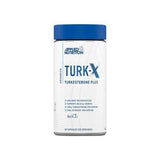

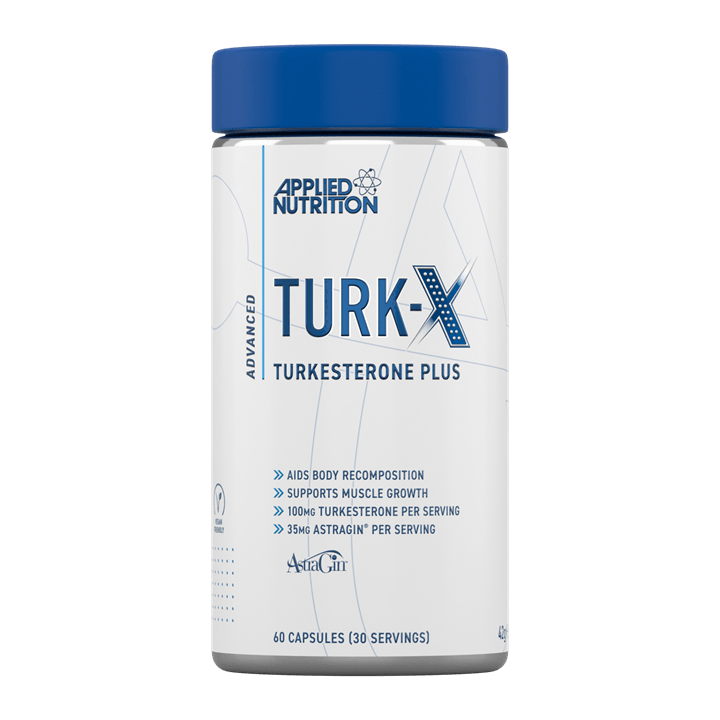
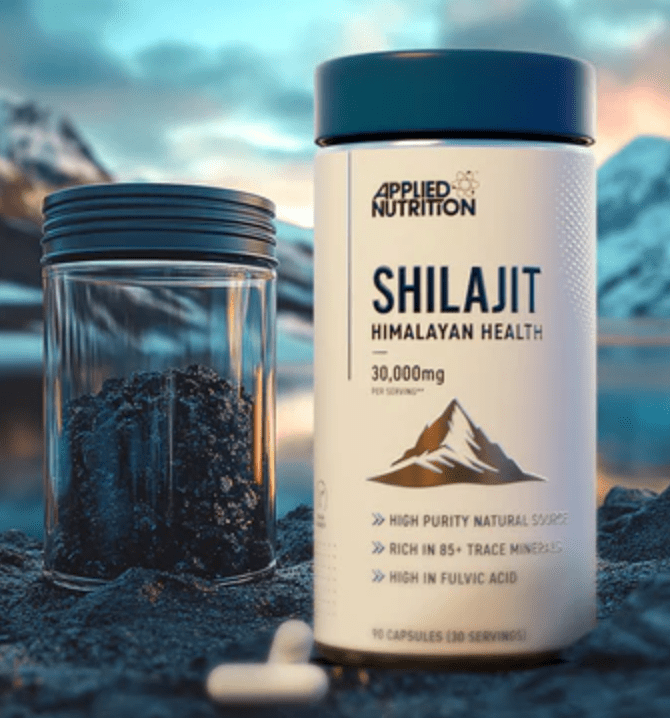

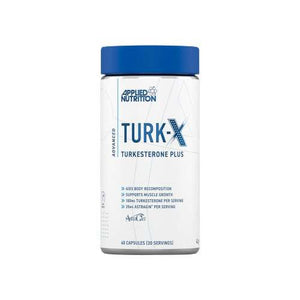





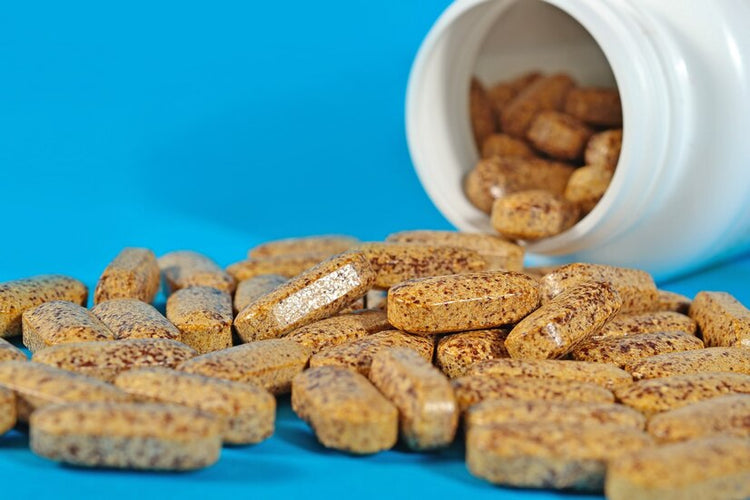
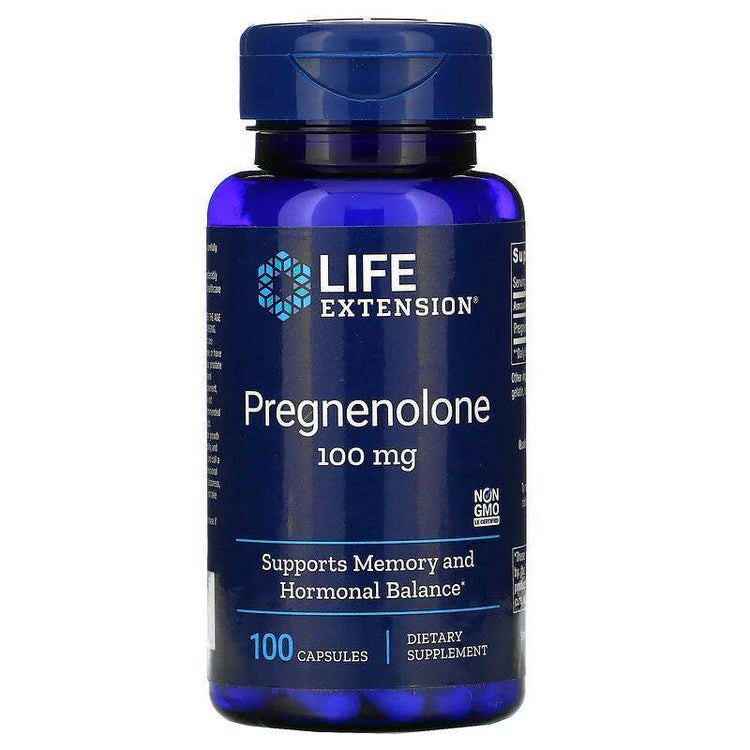
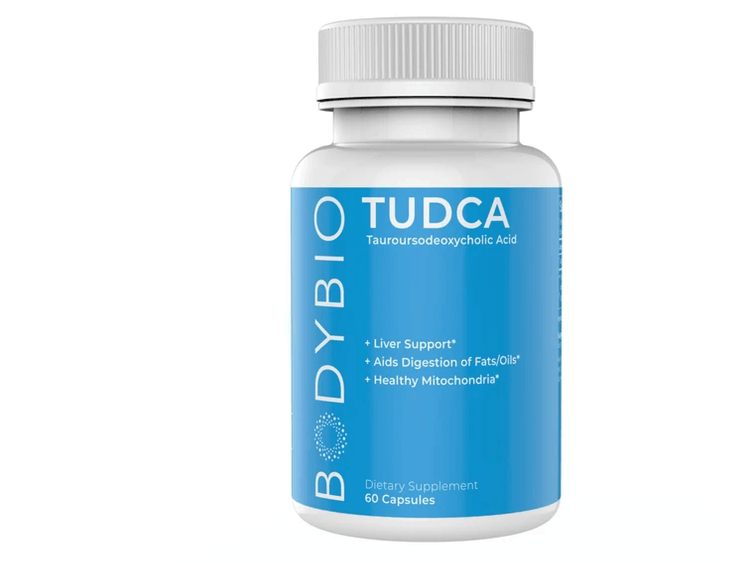

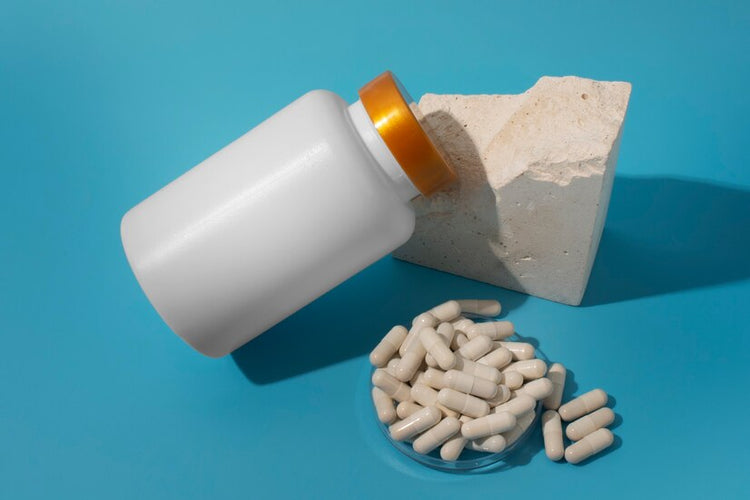
 Rated Excellent by 26,523+ Reviews
Rated Excellent by 26,523+ Reviews